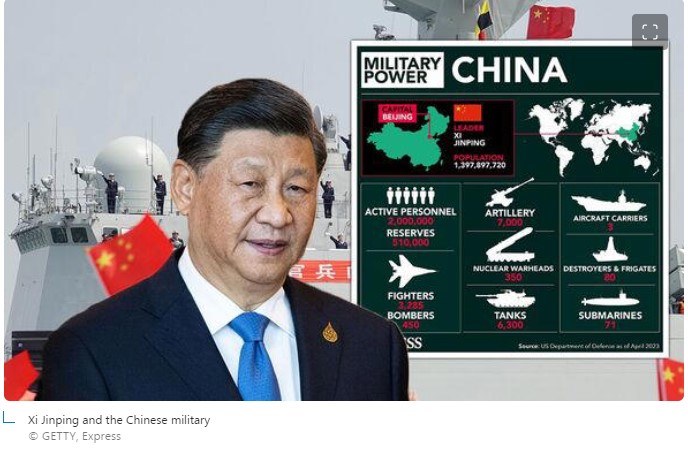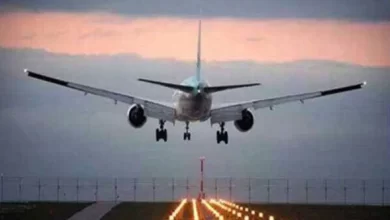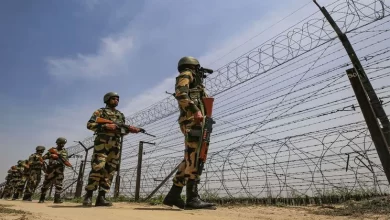Xi Jinping’s military masterplan as China quietly building an army empire

“A strong nation must have a strong military,” Chinese President Xi Jinping has remarked on more than one occasion.
Having successfully soared to rival the US economically, China is now ramping up its efforts to become a military power, expanding its air force, navy, and nuclear arsenal at record rates.
Far more than simple posturing, Beijing has used its growing fighting force to assert its claims over its border with India and the island of Taiwan, as well as vast swathes of the South China Sea.
With conflict feared to be on the horizon, Express.co.uk takes a look at just how powerful the Chinese military has become.
Economic reforms in the Seventies ushered in an era of unparalleled growth in China, averaging 9.4 percent a year between 1979 and 2002. Since coming to power in 2013, President Xi has leveraged this newfound might to build the country’s military at an equally striking rate.
According to Beijing’s announced figures, its defence expenditure has more than doubled over the past decade to reach just under $225billion (£180billion) for 2023, second only to the US. Estimates by international research institutes claim the true amount it sinks into its fighting forces could be as high as $300billion (£240billion).
Beijing has been doggedly pursuing its ambition to make the People’s Liberation Army (PLA) world-class by 2049 – the centenary of the Chinese Communist Party (CCP). Amid ratcheting tensions with other major global players, this time frame has been accelerated. In remarks released ahead of a keynote address on Tuesday, UK Foreign Secretary James Cleverly claimed China had undergone the “biggest military build-up in peacetime history”.
Last month, President Xi said China had to “systematically upgrade the country’s overall strength to cope with strategic risks, safeguard strategic interests and realize strategic objectives.”

China’s military in numbers© Express
China already boasts more active military personnel than any other country at around two million – well over ten times more than the UK – but its rate of hardware production has been even more impressive.
The Chinese Navy surpassed the US Navy in size in 2015, and between 2017 and 2019, the PLA set more vessels to sea than India, Japan, Australia, France, and the United Kingdom combined.
Its naval assets have been bolstered most notably by two aircraft carriers – the refurbished Soviet-era Liaoning in 2012 and the domestically-built Shandong in 2017 – with a third, the Fujian, soon to be combat-ready. Only the US currently has more than two carriers in service.
Its air force has also modernised at a fast pace with the introduction of the Shenyang J-16 Flanker and the stealth Chengdu J-20 fighter to rival US-built F-35 and F-22s. Production of both types is thought to have doubled over the past three years, according to the International Institute for Strategic Studies. The US Department of Defense (DoD) has suggested espionage has been key to the rapid development of China’s weapons technology, a claim that many argue is plain to see in a side-by-side comparison of these jets.
Beijing is also expanding its arsenal of nuclear warheads, with the construction of three new missile silos reportedly underway. With a current stockpile of between 350 and 400 such missiles at present, DoD officials have claimed China could field about 1,500 warheads by 2035 if this modernisation push persists.
After SpaceX’s Starlink constellation proved its worth by maintaining Ukraine’s military communications during the Russian invasion, Beijing unveiled its plans to launch a network of 13,000 low-orbit satellites to upgrade its spyware.







